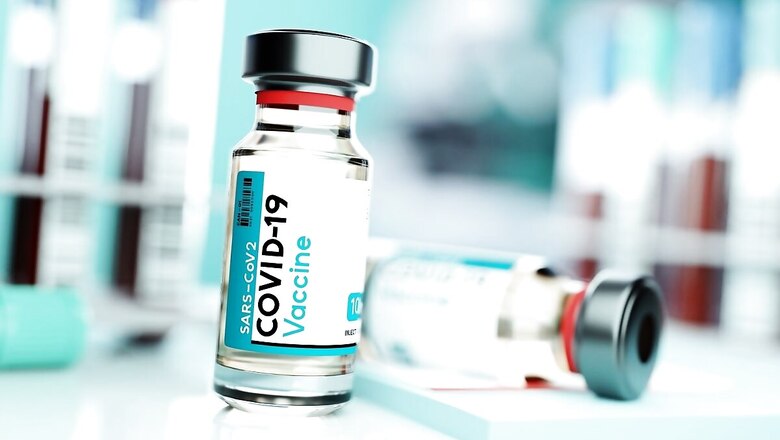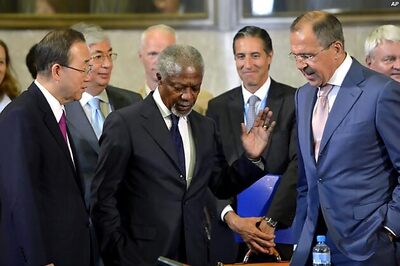
views
For the first time since vaccinations in India began in January, more second doses have been administered to beneficiaries than first doses so far in May, showing that both the Centre and state governments are now focusing on first completing the inoculation drive for people in priority groups.
Government data analysed by News18 showed that out of 16.8 million jabs given across the country till now in May, nearly 8.9 million were second doses, while first doses stood at 7.9 million. Of the first doses, 2.5 million jabs were given to the 18-44 age group; vaccination began for this section on May 1. The numbers meant just 5.4 million people in the 45+ age group, or health or frontline workers got their first doses this month.
Before this, weekly or monthly data since the commencement of the drive on January 16 shows first vaccination doses have always surpassed the second doses in terms of numbers.
“This (the May numbers) shows that of the total people in the priority group of 45+ coming for vaccination in May, nearly 63% came for their second jabs. This is a good development as we will have a bigger number of fully protected people. It is a fact that 80% of all mortalities due to Covid-19 are among the 45+ age group even today,” a senior government official said.
He said the Centre in May asked states to devote 70% of vaccines provided to them for the 45+ age group, exclusively for second doses. In the full month of April, 75% of the jabs administered across India were first doses. So far in May, the share of first doses stand at 47% as the Centre expects the second-dose proportion to increase further.
State-wise second jabs
States such as Kerala, Karnataka, Gujarat, Andhra Pradesh, West Bengal and Tamil Nadu have given more second doses, as compared with first doses, on priority in May. The three states that are leading in the vaccination numbers in the country — Maharashtra, Rajasthan and Uttar Pradesh — are still giving more first jabs. For example, while 60% of all jabs given in Maharashtra this month were first doses, about 58% of them in Gujarat were second doses. In Kerala, 80% of the jabs in May were second doses, while 55% of the shots were first doses in Uttar Pradesh. Maharashtra said on Tuesday it will now focus more on giving second jabs and that it planned to divert some of the Covaxin stock with it for that purpose. West Bengal, which is yet to kick off the vaccination drive in a big way for the 18-44 age group, administered 9.3 lakh second doses this month (90%), compared to just one lakh first doses.
In a review meeting on Tuesday, the Union health secretary told states to ensure that all beneficiaries who have taken the first dose are prioritised for their second doses. “The urgent need to address large number of beneficiaries waiting for second dose was stressed. In this regard, States can reserve at least 70% of the Vaccines supplied to them from Government of India channel (free of cost) for second dose vaccination and remaining 30% for first dose. This however is indicative. States have the liberty to enhance this to as much as 100%. The States were asked to undertake awareness campaign for reinforcing importance of complete vaccination with two doses of the vaccine,” the government said in a statement.
Gap between two doses
News18 had earlier reported that an expert panel of the government is considering increasing the gap between two doses of Oxford-AstraZeneca’s Covishield vaccine and is reviewing new evidence from international studies that suggests the vaccine’s efficacy is improved if the interval between the two doses is longer. The recommended interval between the two doses of Covishield, manufactured in India by Pune’s Serum Institute of India (SII), was increased from four-six weeks to six-eight weeks in April.
Experts believe such a move could ease pressure on the vaccine’s supply chain at a time when India has decided to include all adults in its massive inoculation programme against the coronavirus disease (Covid-19).
In March, a study published in The Lancet journal said Covishield has an 81.3% efficacy if doses are administered 12 weeks apart. Researchers found Covishield’s efficacy to be just 55.1% when two standard doses were administered less than six weeks apart.
Countries such as the UK and Canada administer the two doses of the vaccine 12 weeks and 16 weeks apart, respectively. Experts point out that the vaccine leads to improved immune response with a gap in the time period.
Read all the Latest News, Breaking News and Coronavirus News here. Follow us on Facebook, Twitter and Telegram.



















Comments
0 comment